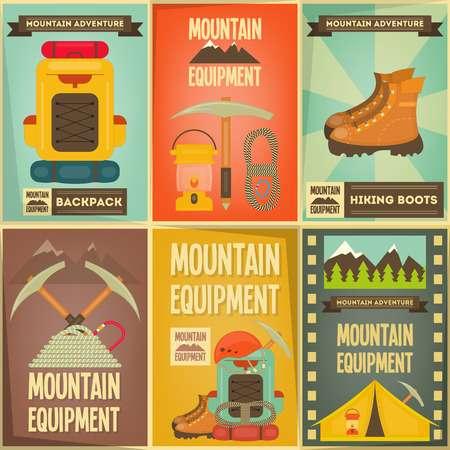1. Understanding Snowy Terrain Challenges
Hiking in snowy terrain across North America brings a unique set of challenges that can surprise even seasoned hikers. From the Rockies to the Appalachians, winter trails are often unpredictable, demanding special attention to what you wear on your feet and how you move. Let’s break down the main obstacles you might face out there.
Common Hazards on Snowy Trails
| Hazard | Description | Why It Matters |
|---|---|---|
| Ice | Packed or black ice that forms on shaded sections of trails or steep slopes. | Can cause slips and falls, making traction crucial for safety. |
| Slush | Wet, melting snow that soaks footwear and hides uneven ground. | Makes trails slippery and can lead to cold, wet feet if shoes aren’t waterproof. |
| Hidden Rocks & Roots | Boulders, stones, or roots concealed beneath snow cover. | Increase risk of tripping or twisting an ankle—good support and awareness are key. |
| Variable Conditions | Changing snow depth, crusty surfaces, or sudden drifts along the trail. | You need adaptable footwear and traction devices to handle these shifts safely. |
The North American Winter Hiking Experience
Unlike summer hikes, winter adventures in places like Colorado, Vermont, or Washington State mean dealing with freezing temps one moment and wet slush the next. Trail conditions can change fast—what starts as packed snow at the trailhead might turn into a sheet of ice higher up. Even popular trails can hide unexpected hazards after fresh snowfall or during a thaw. This means it’s important to choose gear that matches the conditions you’ll face—not just what looks good or feels comfortable at home.
2. Essential Features in Winter Footwear
Why Your Boots Matter in Snowy U.S. Terrain
When you’re heading out into snowy landscapes—whether that’s the Rockies, the Cascades, or the Appalachians—your choice of boots can make or break your adventure. Winter boots are more than just warm shoes; they’re your first line of defense against cold, wet, and slippery conditions. Let’s walk through the key features you need to look for when picking the right pair for American winters.
Key Features to Look For
Insulation: Keeping Your Toes Warm
Insulation is a must for snow travel. It helps trap heat inside the boot, so your feet stay comfortable even when temperatures drop below freezing. Common types include Thinsulate™, PrimaLoft®, and traditional felt liners.
| Insulation Type | Main Benefits | Best For |
|---|---|---|
| Thinsulate™ | Lightweight, efficient warmth | Active hikers, everyday use |
| PrimaLoft® | Water-resistant, compressible | Wet snow, backpacking trips |
| Felt Liners | Removable, easy to dry | Multi-day treks, deep cold |
Waterproofing: Stay Dry on Slushy Trails
Soggy feet are a recipe for misery and even frostbite. Look for boots with waterproof membranes like Gore-Tex®, or those made from waterproof-treated leather. Sealed seams and gusseted tongues add extra protection against melting snow and puddles.
Sole Stiffness: Support Where You Need It
The right sole stiffness depends on your activity:
- Flexible soles: Great for short walks or everyday winter wear.
- Semi-stiff soles: Ideal for day hikes and mixed terrain—enough support without being too rigid.
- Stiff soles: Best for mountaineering or carrying heavy packs where stability on ice and uneven ground matters.
Ankle Support: Prevent Twists and Sprains
High-cut boots with solid ankle support help you stay stable on uneven, icy trails common in many U.S. regions. This is especially important if you’re trekking with a backpack or navigating off-trail terrain.
Quick Feature Comparison Table
| Feature | Why It Matters | U.S. Snow Use Case Example |
|---|---|---|
| Insulation (e.g., 400g Thinsulate™) | Keeps feet warm in sub-freezing temps | Northern states’ snowshoeing & hiking trips |
| Waterproof Membrane (Gore-Tex®) | Keeps water out during slushy conditions | Pacific Northwest winter hikes |
| Semi-stiff Sole Construction | Adds traction & stability on mixed surfaces | Cascades and Rockies trails after snowfall |
| Ankle Support/High Cut Design | Lowers risk of injury on icy paths & deep snow | Northeast backcountry expeditions |
Tip:
If you’ll be adding traction devices (like microspikes or crampons), check that your boots have compatible soles and enough rigidity to handle them comfortably.

3. Types of Footwear for Different Snow Conditions
When heading out onto snowy trails in the U.S., it’s crucial to pick the right footwear for your specific adventure. The type of boots you choose can make a huge difference in comfort, warmth, and safety. Let’s break down the main options and help match them to trail difficulty, snow depth, and temperature.
Insulated Hiking Boots
Insulated hiking boots are a solid choice for most day hikes or well-traveled winter trails. They offer warmth with moderate insulation, waterproofing, and enough flexibility for easy to moderate terrain. These boots work best when snow isn’t too deep (generally under 6 inches) and temperatures are above zero (°F). For icy patches or packed snow, adding traction devices like microspikes is recommended.
Mountaineering Boots
When you’re tackling steeper, more challenging mountain trails or heading into backcountry areas with deep snow and frigid temps, mountaineering boots are the way to go. These boots provide maximum insulation and support, often have a stiffer sole for use with crampons, and handle extreme cold (below 0°F) and deep snow better than standard hiking boots. If you plan to cross glaciers or climb technical routes, this is your best bet.
Snow Boots
For casual walks, snowshoeing on flat terrain, or spending time in snowy towns, classic snow boots will keep your feet warm and dry. They typically feature high shafts to keep out snow, plush insulation, and slip-resistant soles. While not ideal for rugged hikes due to their bulkiness, they excel in deep powder (over 6 inches) and slushy conditions.
Matching Boots to Conditions
| Boot Type | Trail Difficulty | Snow Depth | Temperature Range |
|---|---|---|---|
| Insulated Hiking Boots | Easy-Moderate | <6 inches | Above 0°F (-18°C) |
| Mountaineering Boots | Difficult/Steep/Technical | >6 inches & ice | Below 0°F (-18°C) |
| Snow Boots | Easy/Urban/Casual | >6 inches/slush | -20°F to 32°F (-29°C to 0°C) |
Quick Tips:
- Socks matter! Wool or synthetic socks add warmth and wick moisture away.
- Check fit: Make sure there’s room for thicker socks without making the boot too tight.
- Add-ons: Gaiters help keep snow out of your boots on deeper trails.
Choosing the right pair ensures your snowy adventure stays comfortable and safe—no matter where you roam in wintertime America.
4. Choosing the Right Traction Devices
When youre heading out on snowy trails in the U.S., picking the right traction device is just as important as choosing the right boots. With so many options—like microspikes, crampons, and snowshoes—it can be confusing to know what works best for your adventure. Here’s a breakdown to help you make the right choice for typical American winter conditions.
Microspikes
Microspikes are small chains or coils with short metal spikes that slip over your boots. They’re lightweight, super easy to pack, and ideal for packed snow and icy trails you’ll often find in places like the Appalachian Trail or city parks after a light snowfall. If you plan on hiking well-traveled paths where the snow is hard-packed but not too deep, microspikes are usually all you need.
Best For:
- Packed snow and ice
- Mild hills or gentle terrain
- Day hikes or running on wintry sidewalks and park trails
Crampons
Crampons are heavy-duty devices with longer, sharper spikes. You’ll see mountaineers and ice climbers using these on serious climbs—think frozen waterfalls, steep mountain slopes in the Rockies, or icy backcountry routes. Crampons give top-notch grip where slipping could mean real danger.
Best For:
- Steep, icy terrain
- Mountaineering and ice climbing
- Backcountry adventures in high mountains
Snowshoes
Snowshoes help you “float” across deep, fluffy snow by spreading your weight over a larger area. If you’re trekking through fresh powder in places like the Sierra Nevadas or exploring untouched forest trails after a big storm, snowshoes are your go-to. They prevent post-holing (sinking deep into soft snow) and make walking much easier when the snow piles up.
Best For:
- Deep, unpacked snow
- Wilderness exploration off-trail
- Winter backpacking trips
Quick Comparison Table
| Traction Device | Best Terrain | Main Use | Packs Easily? |
|---|---|---|---|
| Microspikes | Packed snow & light ice | Easy hikes, city trails | Yes |
| Crampons | Steep ice & hardpack | Mountaineering, technical climbs | No (heavier) |
| Snowshoes | Deep powder & off-trail snow | Trekking through deep snowfields or forests | No (bulky) |
Tips for Using Traction Devices Safely:
- Always match your traction device to both your footwear and the trail conditions.
- If you’re new to using crampons or snowshoes, practice in a safe area before tackling tougher terrain.
- Keep an eye on changing trail conditions—sometimes you’ll need to switch from one device to another during your hike.
- Avoid wearing traction devices indoors or on bare rocks—they can damage floors and dull quickly!
Selecting the right traction device will help keep you upright and confident on snowy American trails, letting you enjoy winter hiking with less worry about slips and falls.
5. Tips for Fit, Comfort, and Safety
Sizing Your Footwear for Thick Socks
When hiking in snowy conditions across the US, thick socks are a must for warmth. Always try on boots with the same socks you plan to wear on your hike. If you use custom insoles or foot warmers, bring those too. Most hikers find that going up half a size gives enough room without making boots too loose. If your toes touch the end when standing flat, try a bigger size.
Boot Sizing Tips Table
| Footwear Feature | What to Look For |
|---|---|
| Toe Room | Wiggle space for all toes, even with thick socks |
| Heel Fit | Snug but not tight; heel shouldn’t slip when walking |
| Width | No pinching at sides; enough width for sock layers |
| Ankle Support | Cushioned but not restricting movement |
Breaking In Your Boots Before the Trail
Don’t take brand new boots straight onto a snowy trail. Wear them around the house or on short walks first. This helps soften stiff materials and molds the boot to your foot shape. Consider wearing your winter hiking socks during this process so everything fits just right together.
Layering Gaiters for Extra Protection
Gaiters keep snow and cold out of your boots and pants. Choose waterproof gaiters that cover from your ankle up to mid-calf or knee. Layer them over your boots and pants—never tuck pants inside boots, as this channels snow into your footwear. Secure gaiters snugly so they don’t ride up or slide down as you walk.
Preventing Blisters and Cold Toes
- Blisters: Use moisture-wicking liner socks under thicker wool socks to reduce friction. If you feel hot spots forming, stop and apply moleskin or athletic tape right away.
- Cold Toes: Avoid cotton socks—choose wool or synthetic blends that retain heat even when damp. Make sure boots aren’t too tight, as this restricts circulation. On very cold days, consider using toe warmers designed for outdoor use.
- Socks: Bring an extra dry pair of socks in a ziplock bag in case yours get wet during the hike.
Quick Reference: Common Issues & Solutions Table
| Issue | Solution |
|---|---|
| Blisters forming mid-hike | Add moleskin or tape; wear liner socks under hiking socks. |
| Socks getting wet from snow or sweat | Change into dry spare socks; use gaiters to keep snow out. |
| Numb or cold toes | Add toe warmers; loosen laces if boots are too tight; choose wool socks. |
| Painful pressure points in new boots | Break in boots gradually at home before hiking. |
Extra Pro Tips for US Winter Hikes:
- If you’re hiking in areas like Colorado Rockies or the Pacific Northwest, check local gear shops for region-specific advice—they often know which brands and models work best for local trails.
- Treat leather boots with a waterproofing product before winter hits—this helps keep feet dry on slushy days.
- If you use traction devices like microspikes or crampons, make sure they fit well over your chosen boots before heading out.
- Lace up securely but not too tightly—good support helps prevent slipping and sliding inside your boots on uneven terrain.
Your choice of footwear can make or break a winter adventure—take time to get it right so every step stays comfortable, safe, and warm!


